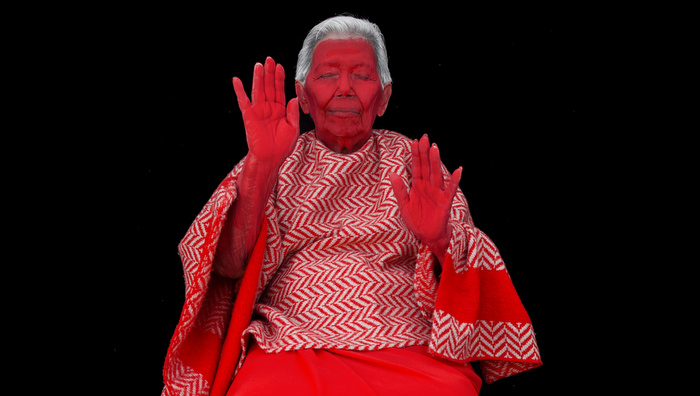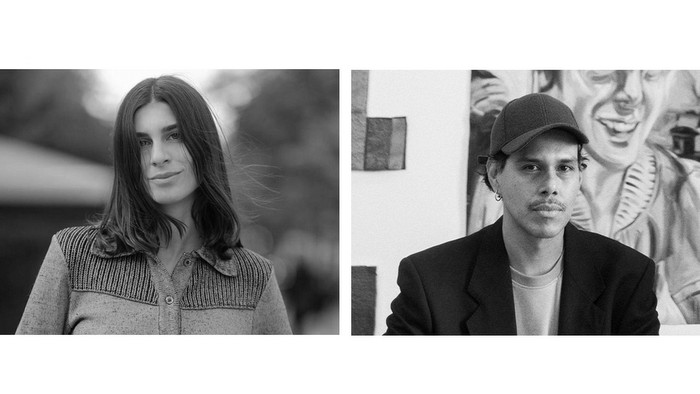Roldán Lauzán (San Antonio de los Baños, 1987) is one of the most famous Cuban artists within the Art Week of Madrid, where he has exhibited three editions, in the stand that the Collage Habana Gallery usually has in Art Madrid.
The visibility he has acquired in recent years has led this young man (graduated from the Academy of Fine Arts "Eduardo Abela", in 2006), to exhibit at the important Portuguese gallery Nuno Sacramento, and more recently, to join the payroll of BAT Alberto Cornejo from Madrid.
From Arte por Excelencias we have been following him for years, so we took advantage of his recent visit to the Spanish capital to talk about his new work for Art Madrid, the contemporary art fair of which our magazine is a media partner and which took place in the Crystal Gallery of Centro-Centro Cibeles, between February 27 and March 3.
Roldan, it's the third time you've come to Art Madrid. What brings you this fair?
Art Madrid is for me a kind of ritual. It's like coming back. I bet a lot for this fair, and I worry about bringing something genuine and different. I do not like to repeat myself. Sometimes the pieces give more, but I had been working with the Hierophants for two years and I wanted to bring something completely new, refreshing for me and also for the audience.
Madrid is the ritual of February. It is a fair that allows me to do what I want. I have a very intimate relationship with the fair that I love. And if the work schedule allows me to continue participating.
What are you bringing this year?
This year I made a regression. I had been working on the Hierophants series, especially the nuns, and it gave me as a kind of creative fatigue, a product of the series of works and commitments that I have been taking this year, of fairs and others ... I came to a kind of creative boredom, a small crisis.
And what I did was go back to the first things I had done. For me that returning is always therapeutic, it restores you and you find speeches that you have already left behind. And retaking it always returns something new. So I did the series Las muñecas de la infanta, which is based on images that I saw in coloring books when I was a child.
These were the first images that, unconsciously, I began to reproduce in the illustrations for children's books -the first thing I did in the art world- and that I then took to the canvas in my first exhibitions in Havana.

Las muñecas de la infanta?
Las muñecas de la infanta are described alone. They have a kind of disturbing evil, represented by a very childish aesthetic. That kind of ambiguity, which will always be present in my speech, is the center of this series.
And this other work I consider as part of the Hierophants, specifically of a work that was called El padre Abelardo, where it was not clear if the priest was a woman or homosexual. In it I represented, with a glamorous image, all the conflict of gender identity, religious, spiritual.
Although I think this painting advances a little more, it has the same ambiguity as El padre Abelardo, and incorporates other elements of that series, such as the motifs of ecclesiastical architecture and symbols of the Judeo-Christian tradition, which support all that spiritual platform, hermetic, that coexists with a figure that is not at all quiet, but even being a religious or spiritual figure, evokes his sexuality, his evil ... All this antagonistic coexistence in the character is what gives the closure to the speech.
Does the work have to do with the worldwide scandal that now surrounds the Catholic Church?
The media are to criticize the reprehensible behavior of these subjects, but I do not think that the piece goes directly to criticize the sexual scandals of the church. At first this piece was going to be called Cardinal, but it seemed so direct and obvious, that I replaced it with The sum of all the fears.
I think it really goes beyond that, and what I can do is to shed some light on why that is happening. And more than saying something, is questioning what is inside the human being for these things to happen. I believe that the piece coexists with all that series of inner demons. I do not judge or criticize the sexual positions of people. We are totally free to decide what we want to do. But if your sexual position hurts third parties, in this case children, for me it is absolutely reprehensible.
The piece I do not think goes directly to address this problem, but approaches from the same moment that addresses gender identities, from ambiguity. It does not make it clear to you if it is provocative, if it is a man, a woman, what is your role ... I believe that the cycle of discourse will close in the spectator.
But I will not be naive and at the moment I did the work I felt the approach that had with this whole subject. I knew it was going to be a bit controversial in a country as Catholic as Spain. But my intention is not to offend anyone's faith. In fact, it has never been my intention to criticize or question the Catholic Church or any other church.
I, as heir of the universal culture, appropriate the Judeo-Christian iconography to argue my speech, to create it as a platform of dialogue within my work, but I do not go directly to what religion is.
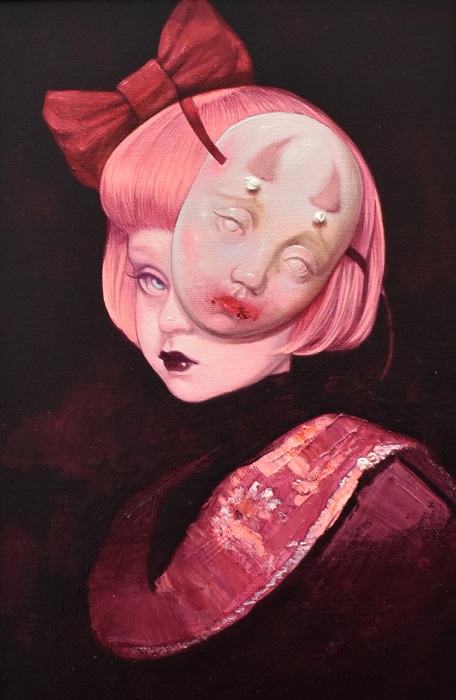
Have you had any criticism for the use of nuns within the Hierophants series?
No, because the nuns never crossed the border of the obscene, the vulgar. Especially because it was not my intention. I believe that in the moderation, in the subtlety, is really deep. It is easy to be an exhibitionist and go out in leather, the difficult thing is to suggest your sexuality, to teach you without offending. And so it is in everything.
There is a song by Carlos Varela that I like a lot, which says "in vain was letting go of the reins and not knowing how to stop". I do not believe much in that catharsis of evoking everything, getting everything out of the inside and being aggressive because it's a right. I prefer moderation.
Although in some other occasion a more religious public if it censured me or told me the nuns are not like that ... I am not talking about what happens inside the convents, because I do not know. I'm just saying that the nun's wardrobe is an archetype for society and a symbol of holiness.
And when you contrast it to a slightly disturbing image, it happens within the viewer a question of how much a person can be holy and to what extent can be lustful; this is one of the antagonisms that the Hierophants series talks about.
How was the experience, last year, with the Nuno Sacramento gallery in Portugal?
Fabulous Nuno and José Sacramento are two spectacular professionals, and some wonderful people. They have an interesting art movement in Aveiro and Ílhavo, which is where they have the gallery. And they are very inclusive, many people from the town go to see art. They have made a kind of didactic project, linked to their academy that makes people from different opinions go through the gallery.
And they always manage to translate their exhibitions into sales, which is very important. They have a very solid job in Portugal and for me it was an honor to work and do projects together.
You have recently entered the payroll of the BAT gallery Alberto Cornejo ...
Alberto Cornejo has given me an incredible opportunity and we have been talking about doing jobs together. What happens is that I have had many commitments this year, especially in New York, with Jorge Camejo Art, in addition to other commitments I had in Havana and Portugal.
And as I said at the beginning, this led to a kind of creative fatigue that has not allowed me to work at all the speed I've wanted. That is why Alberto and I have not talked about a more solid project, although I am already part of their payroll and have a couple of my works on sale.
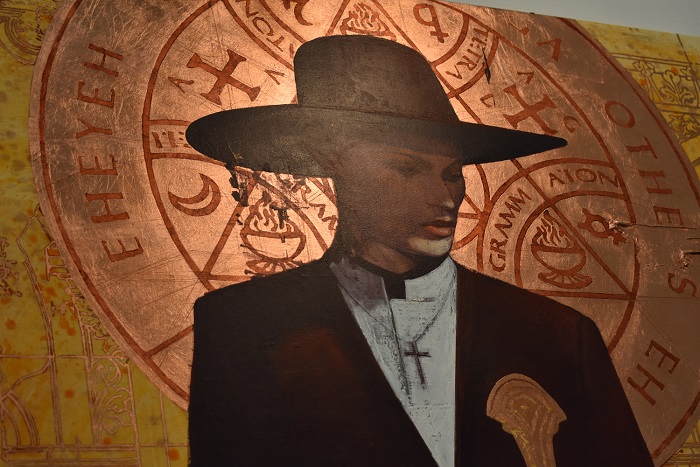
How do you see the art market in Cuba today?
I do not deny the art market. The art market is something that many people demonize; I do not do it, as long as you assume it responsibly. It is the market that finds the artist and not the other way around. I think that if you are careful and do not let yourself be vitiated and you are responsible with your own work, that will open many doors for you.
In Cuba, it can not be said that there is a national market, because most Cubans can not acquire art. Therefore, the sale of art in Cuba is necessarily linked to the public that visits the country. It is not a secret to anyone that the more tourism reaches Cuba, the more opportunity artists will have to sell, especially those who do not have the possibility or have not found the strategy of taking their work out of the country; although there are many artists doing very interesting things outside of Cuba.
Art in Cuba continues to move internally. It continues to evolve and interesting projects continue to be made. There is a very serious art, although there is no internal market. For example, Collage Habana, with its three galleries, keeps making exhibitions and moving Cuban art. Right now we are in Art Madrid thanks to your support.
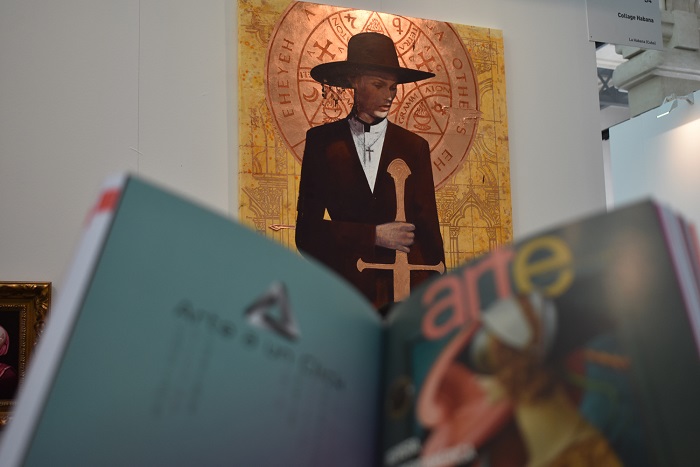
Photos: @yricard
Publicaciones relacionadas

Papucho y Manana Club: “La salsa no está muerta, está más viva que nunca”
Noviembre 18, 2025


